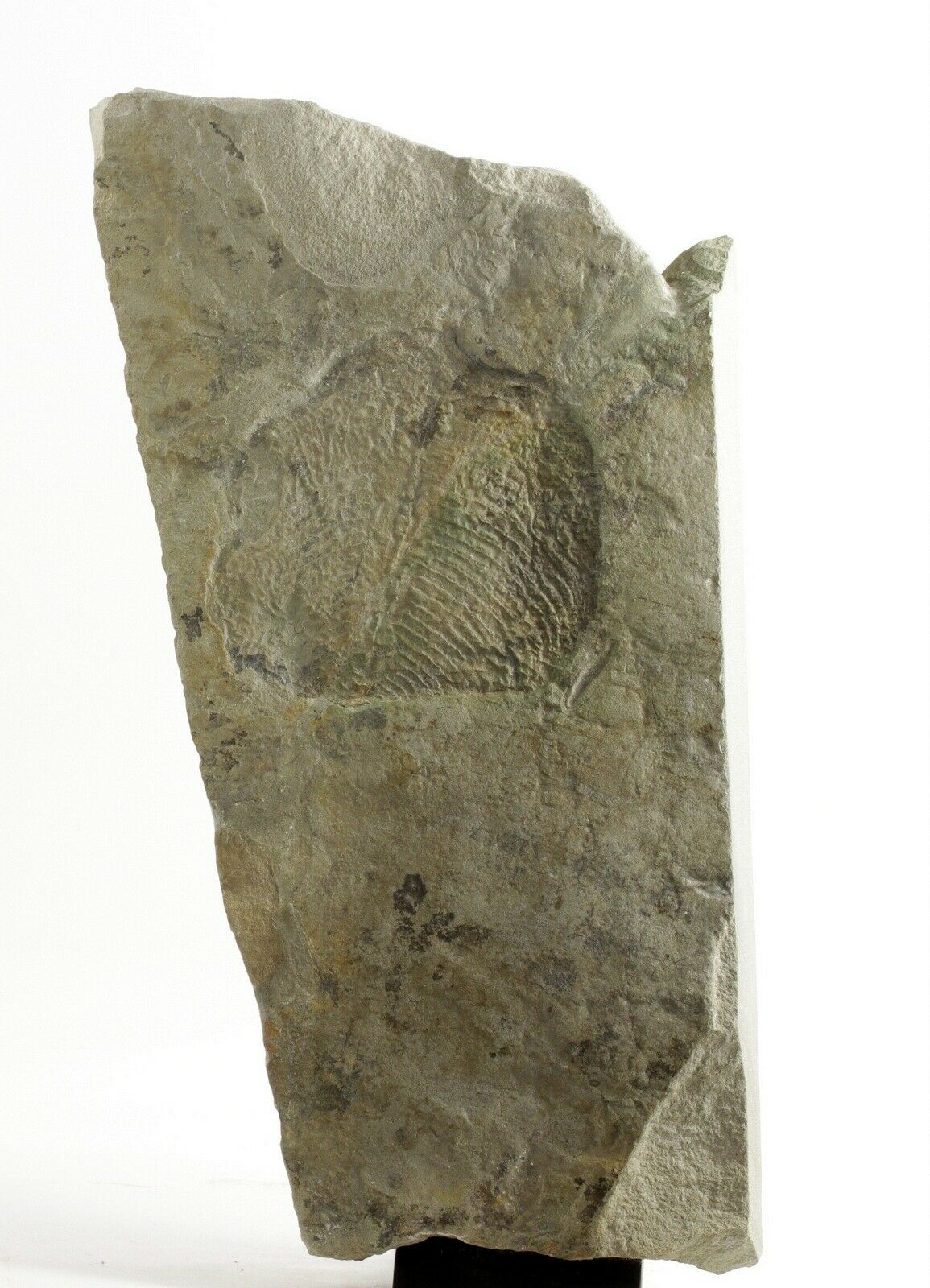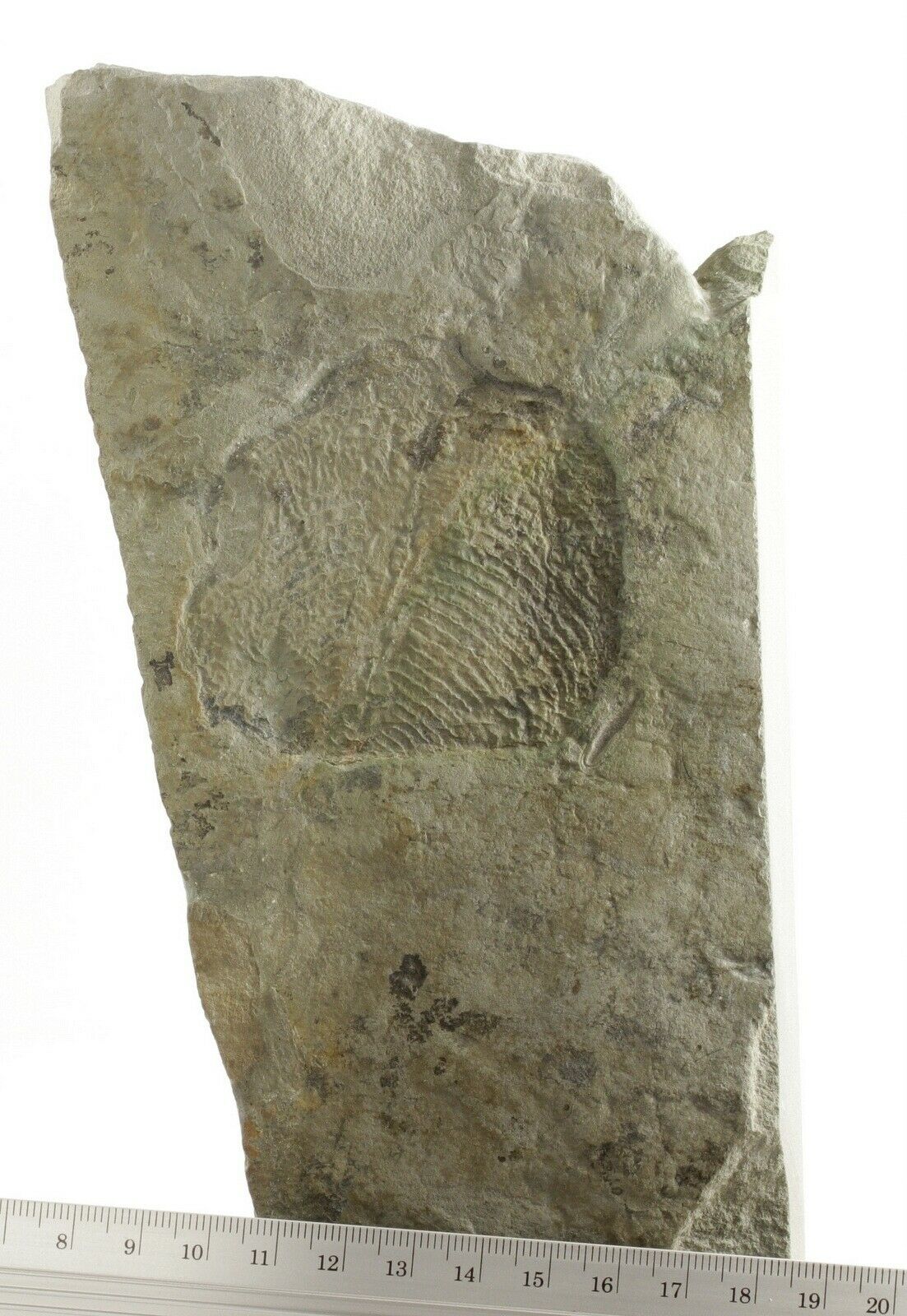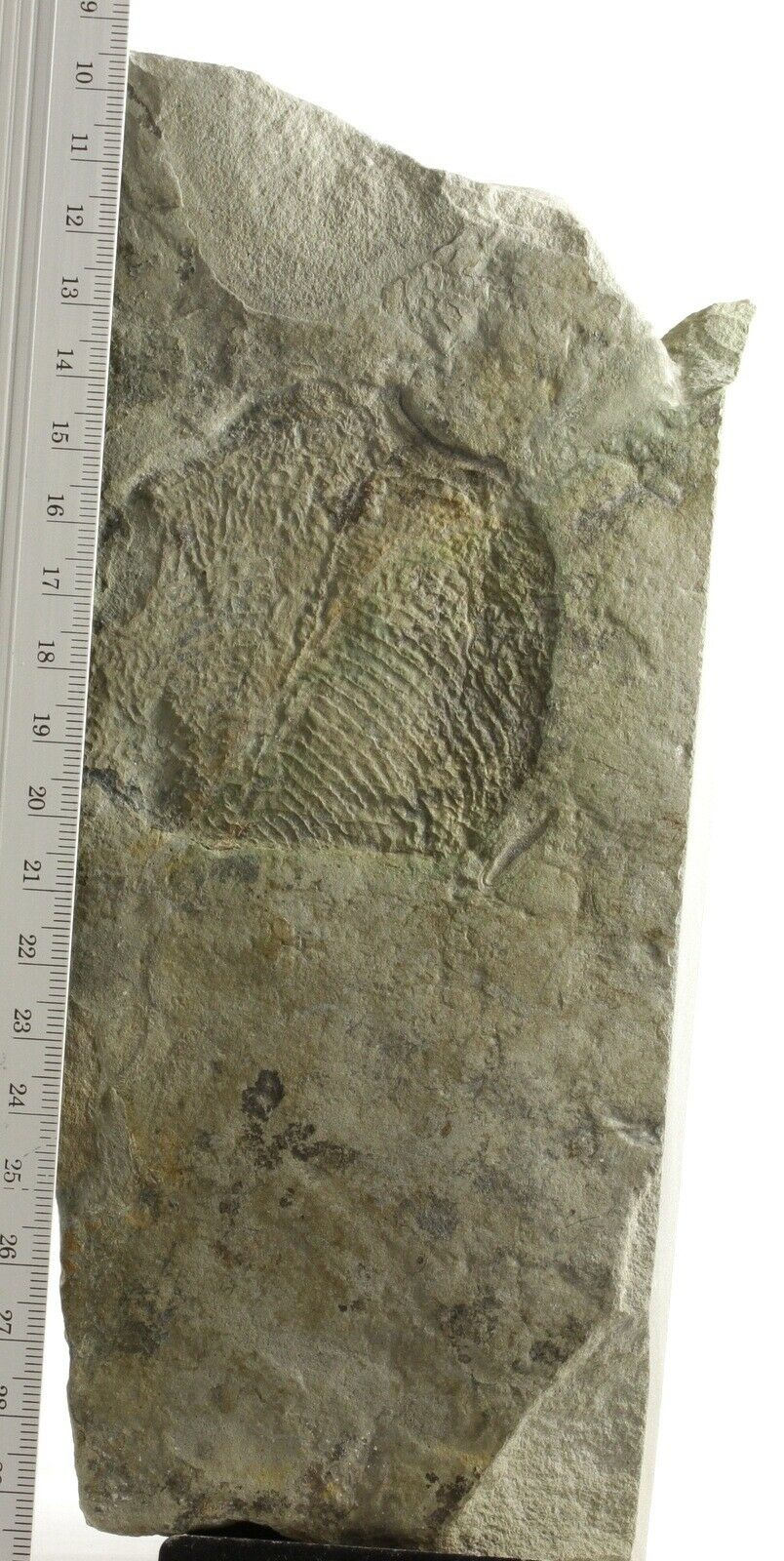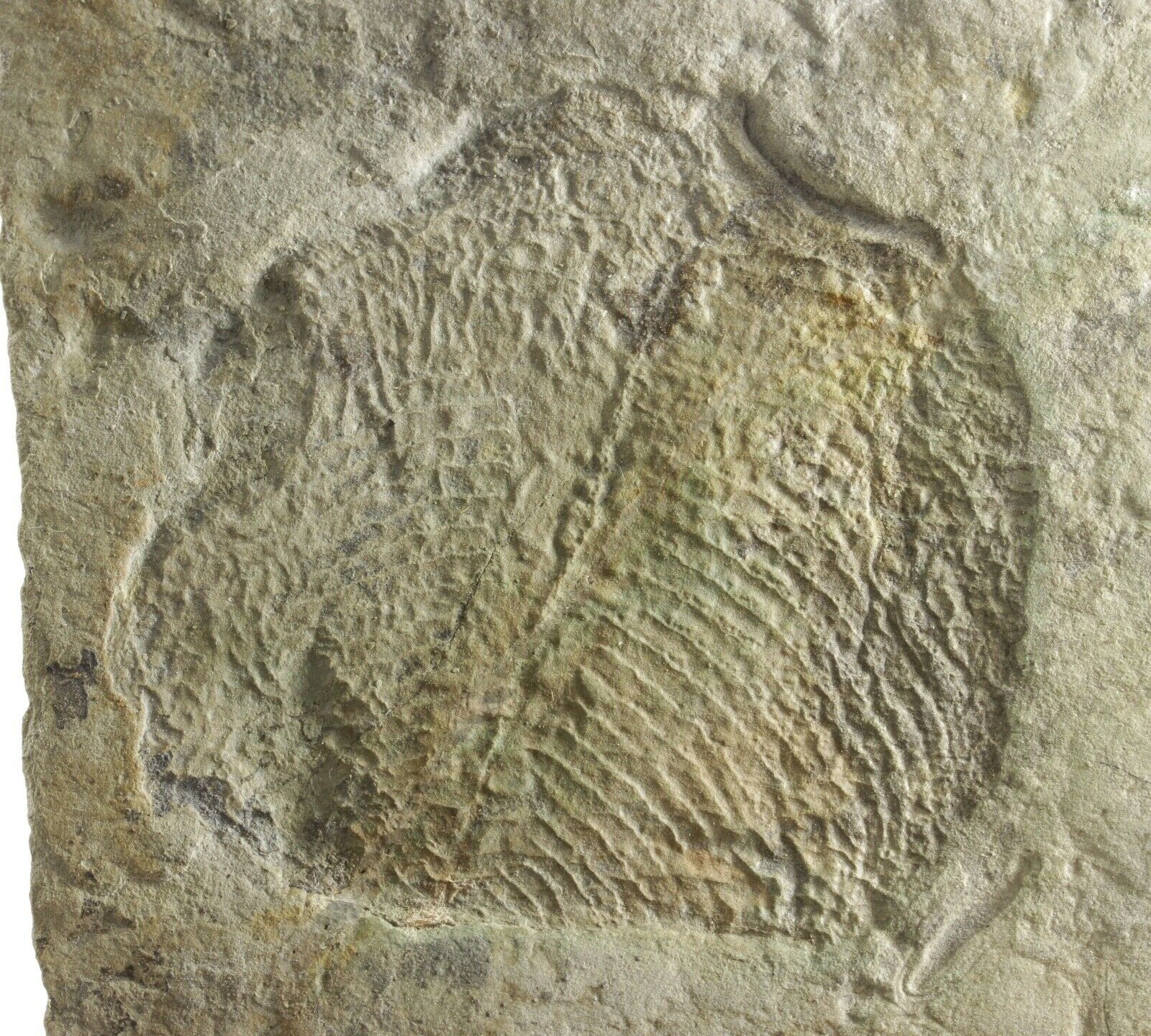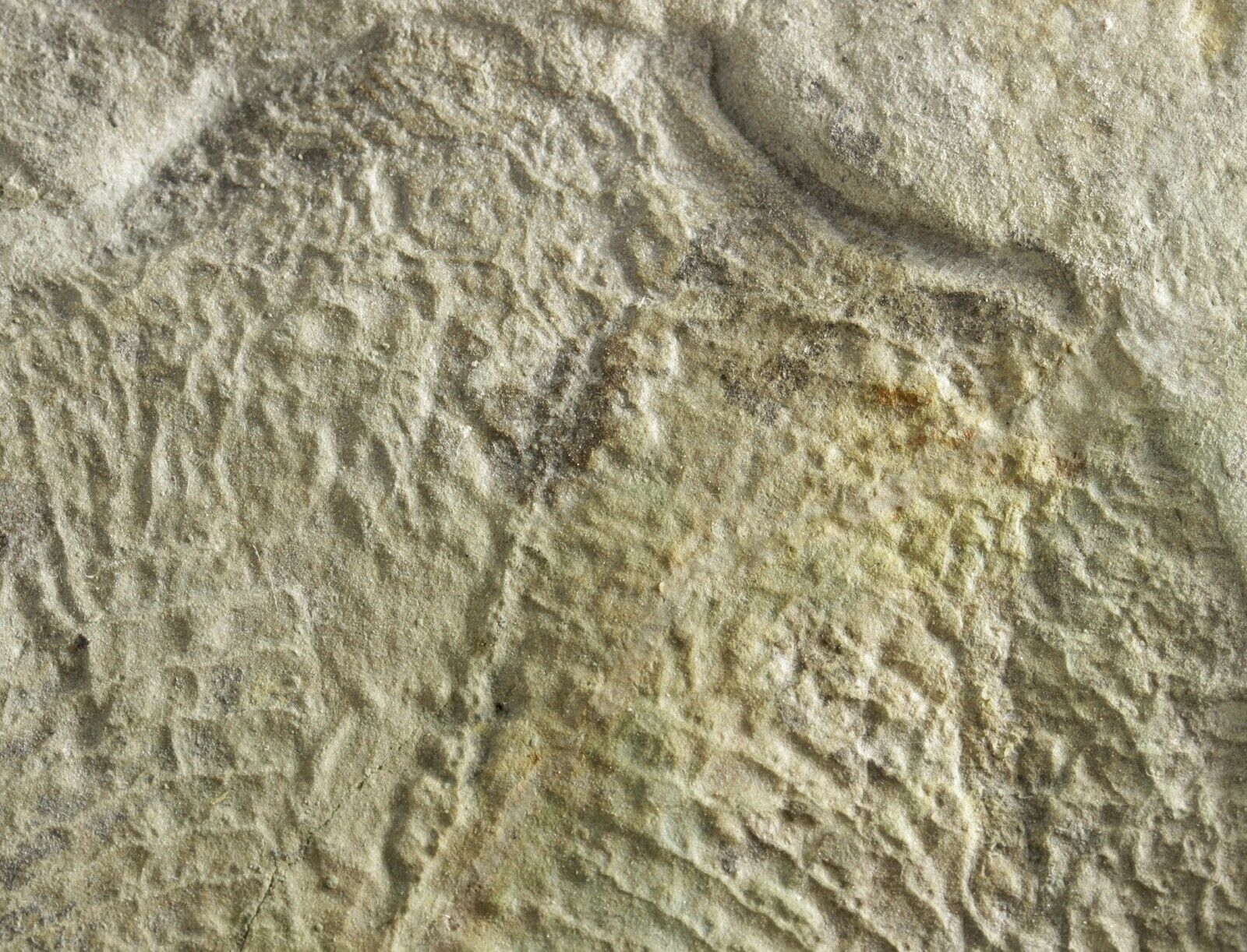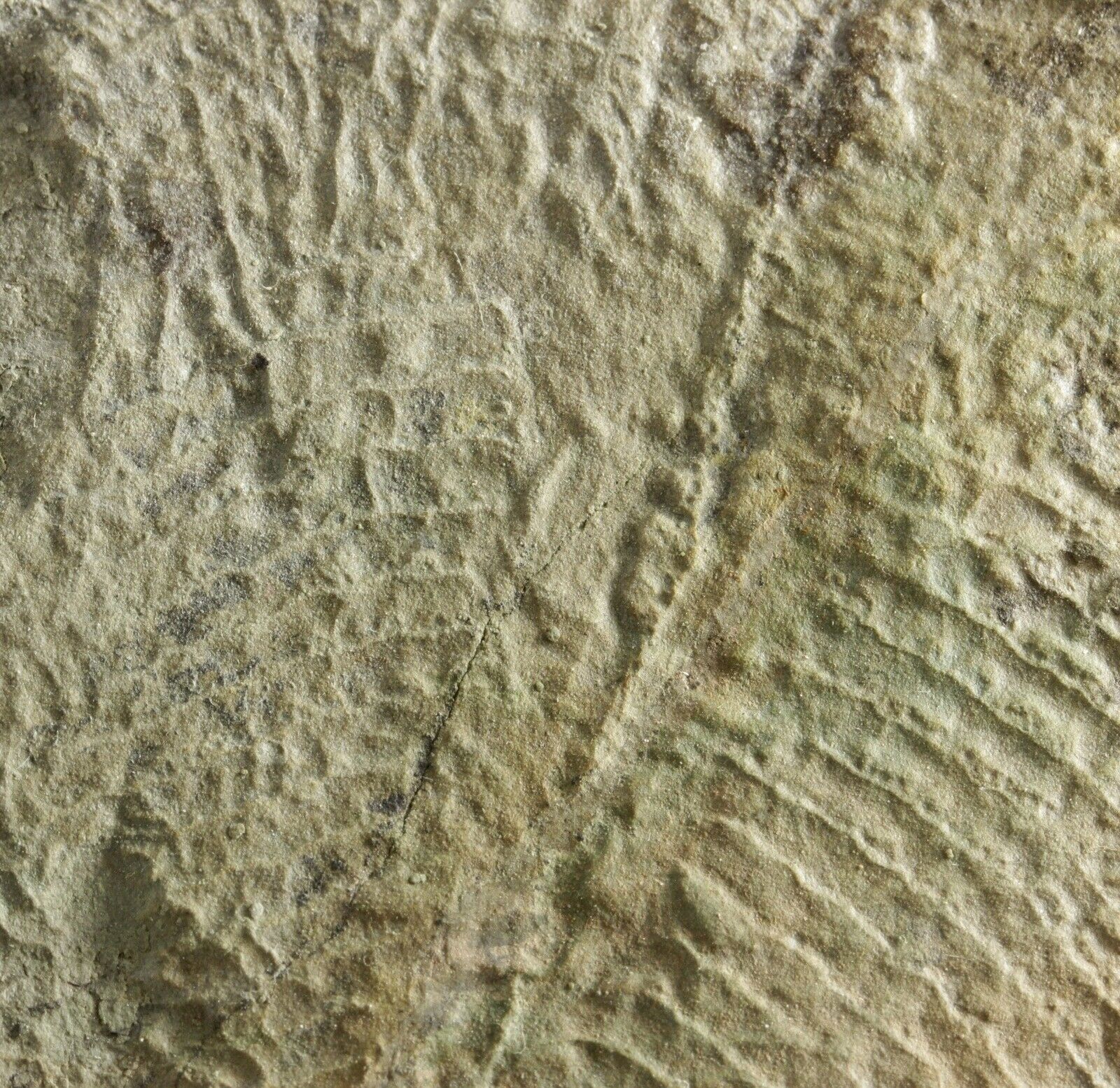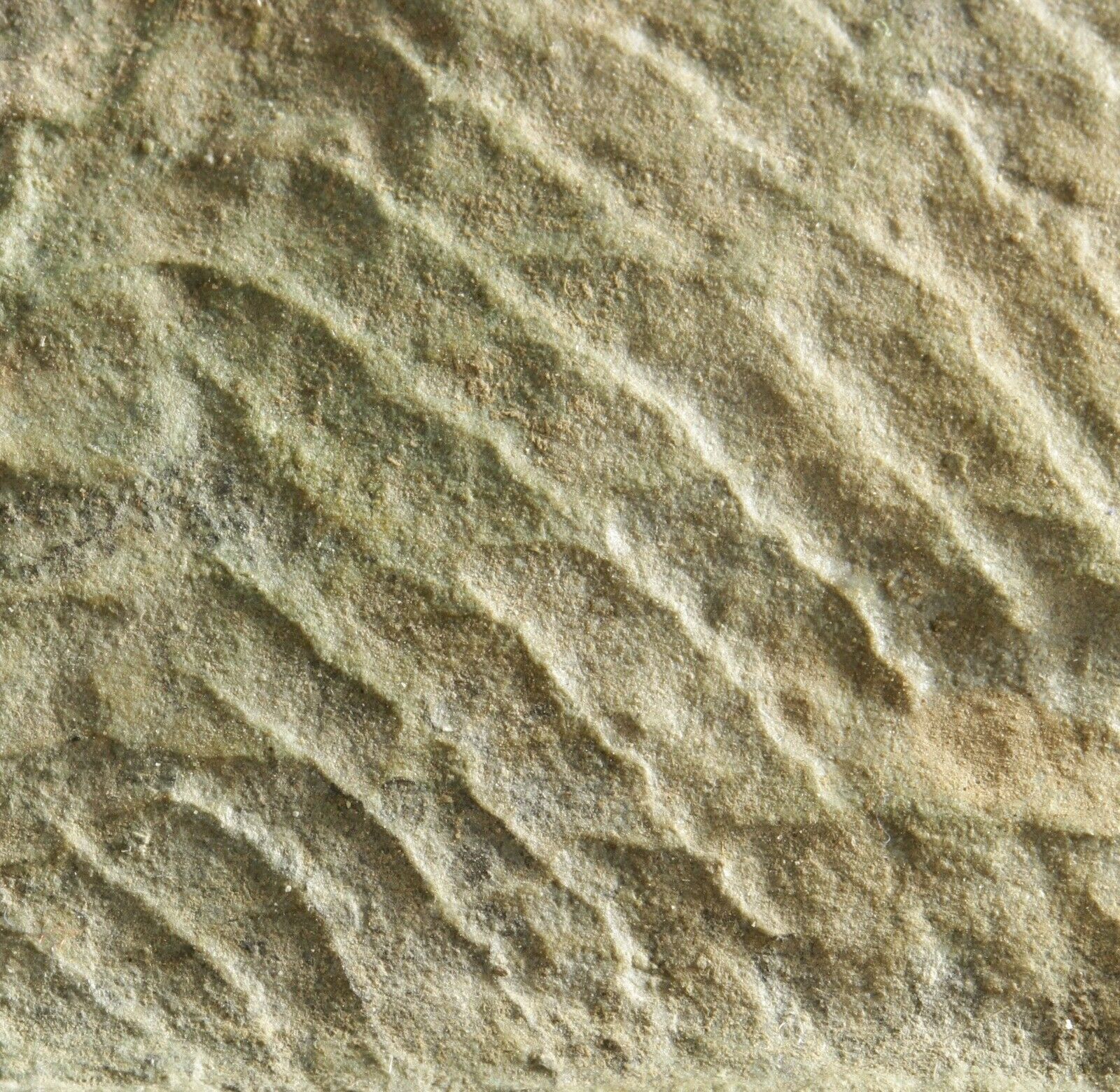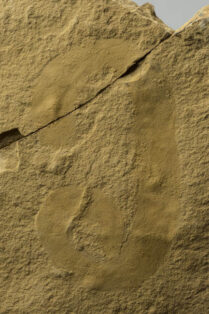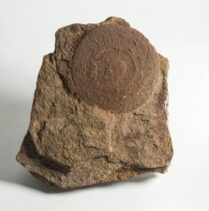Description
Yorgia waggoneri (Ivantsov, 1999) and Kimberella quadrata (Glaessner, Wade, 1966)
Precambrian
Penega Formation
East Angelsk, White Sea Russia
67mm (2.7 inch) Yorgia and 15mm Kimberella.
Ediacaran. Problematica. Mollusc. Soft-bodied. Association.
Yorgia is a genus of early animal from the Vendian Period, the time of the Ediacaran Fauna. It was disc-shaped and similar to the more famous Dickinsonia but it shows an asymmetrical body part arrangement. Trace fossils associated with some specimens indicate it was mobile. Yorgia known from the White Sea locality in Russia and the Flinders Ranges, Australia.
Kimberella is a genus of early, bilaterally-symmetrical animal originally described from the Ediacara Hills, southern Australia as a jellyfish. It was later reinterpreted as a box jelly. Since then, numerous well-preserved specimens from the White Sea, northern Russia have led researchers to conclude that may be more closely-related to molluscs (something like a primitive slug).
This one of the most ancient association pieces we’ve ever seen.
The Vendian Period spans about the last 110 million years of the Proterozoic Eon from about 540 to 650 million years ago. It is during this time that soft-bodied, macroscopic life appeared. By the end of the Vendian the supercontinent, Rodinia, which formed from the collisions of the major land masses approximately 1.2 billion years ago, had started to fragment into continents that would reconnect at the end of the Paleozoic Era over 300 million years later.


